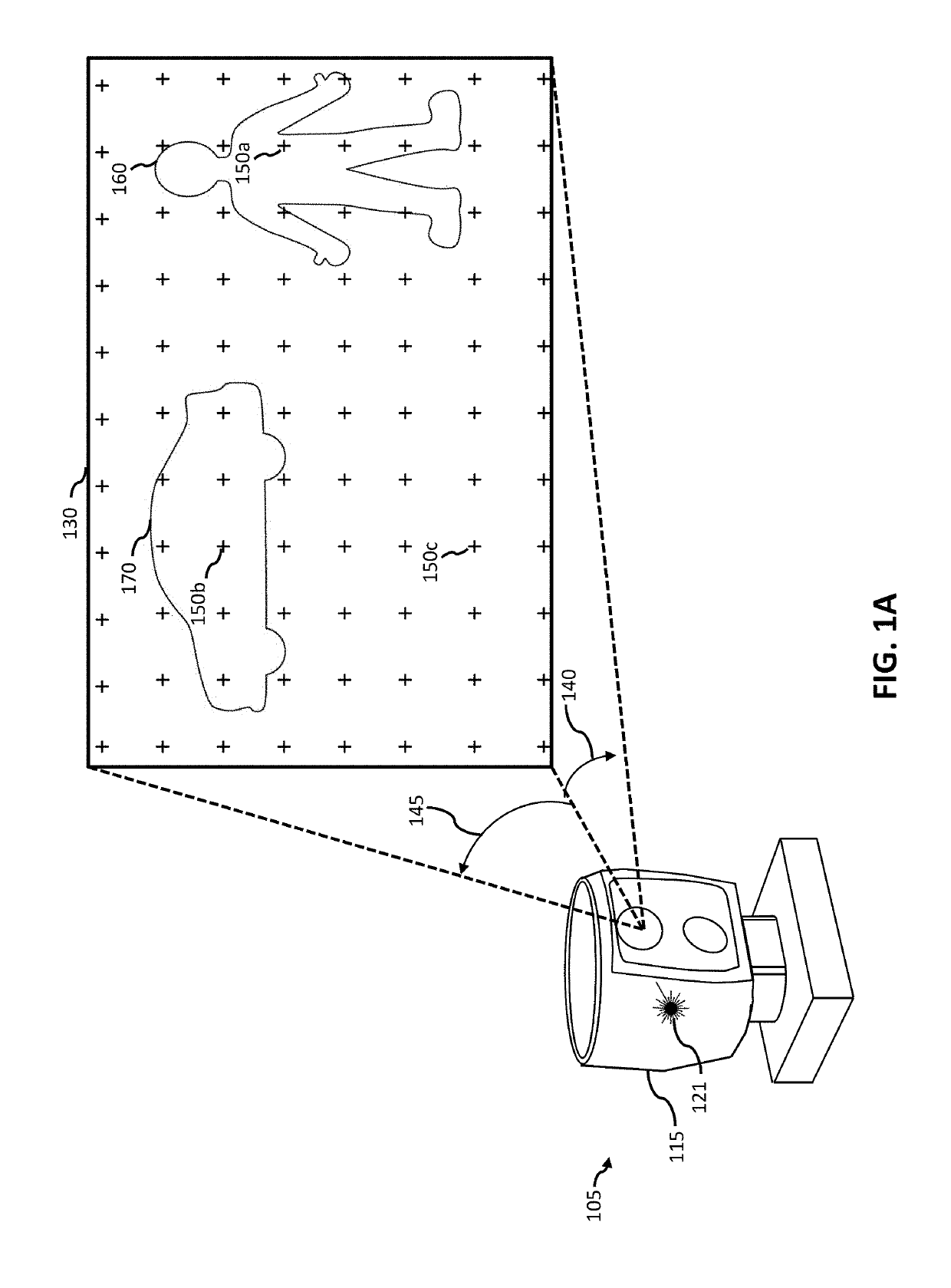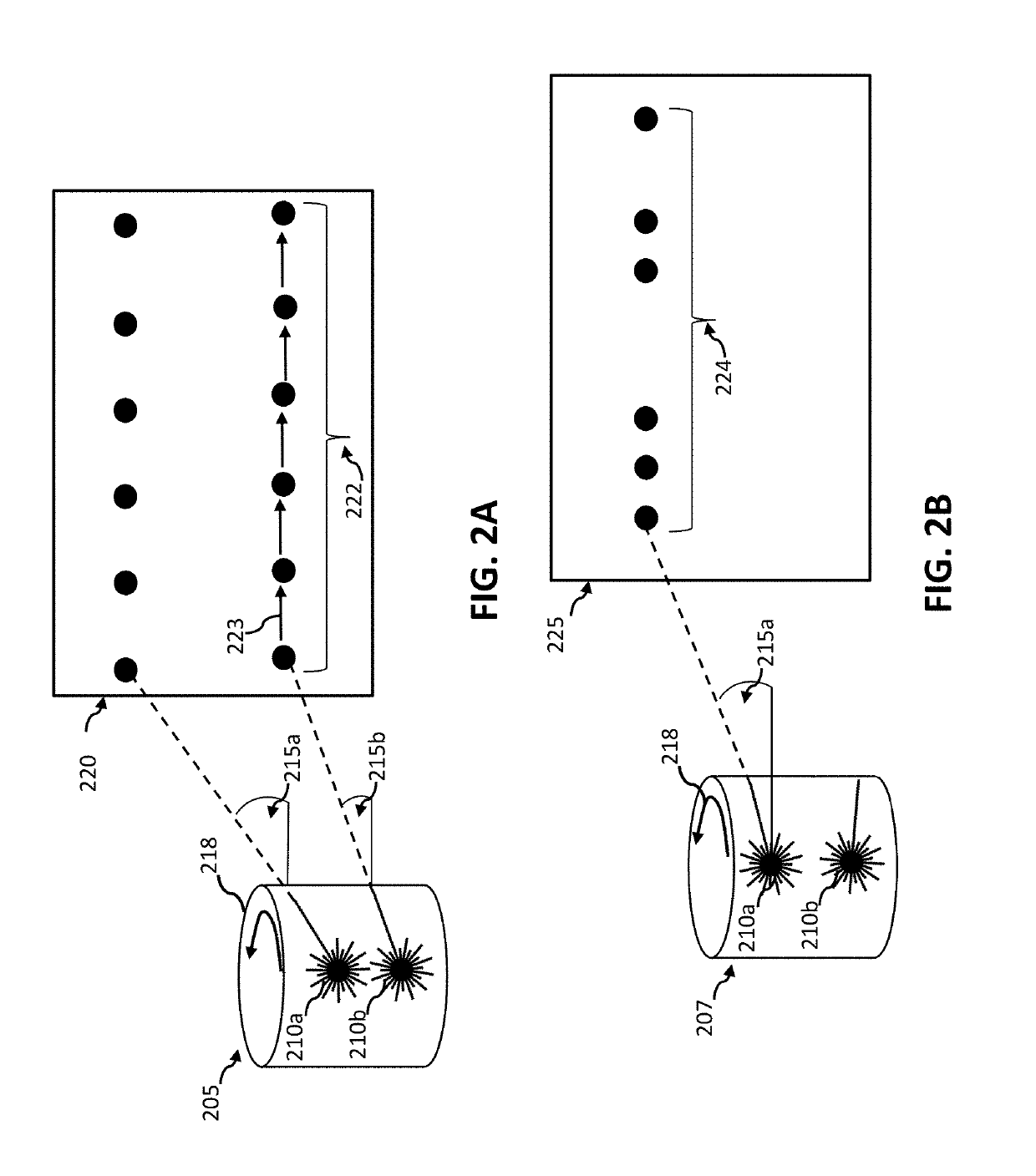Vehicle-integrated lidar system
a lidar system and vehicle technology, applied in the field of vehicle-integrated lidar systems, can solve the problems of poor angular resolution and insufficient measurement spacing (i.e. angular resolution) to identify the detailed boundaries of objects
- Summary
- Abstract
- Description
- Claims
- Application Information
AI Technical Summary
Benefits of technology
Problems solved by technology
Method used
Image
Examples
Embodiment Construction
[0080]In digital photography light from is received at a sensor form many points in the local environment at once. In contrast, a laser range finder can use a relatively small number of lasers (e.g. 1-64) to generate laser pulses aimed sequentially at a number of points (e.g. 100,000) to perform laser ranging scans of the FOV. Hence, the laser pulses (e.g. and corresponding time of flight measurements in discrete directions) represent a scarce resource and the FOV is often undersampled with respect to sensing detailed boundaries of objects in the local environment. Many LIDARs mechanically rotate with a constant or nearly constant angular velocity. Such rotating LIDARs can sweep one or more lasers through a deterministic range of directions (e.g. each laser sweeping through a 360 degree azimuthal range at a fixed elevation angle). This type of operation does not constitute dynamically steering the laser(s) in a LIDAR. The angular momentum of the spinning portion in a mechanical LIDA...
PUM
 Login to View More
Login to View More Abstract
Description
Claims
Application Information
 Login to View More
Login to View More - R&D
- Intellectual Property
- Life Sciences
- Materials
- Tech Scout
- Unparalleled Data Quality
- Higher Quality Content
- 60% Fewer Hallucinations
Browse by: Latest US Patents, China's latest patents, Technical Efficacy Thesaurus, Application Domain, Technology Topic, Popular Technical Reports.
© 2025 PatSnap. All rights reserved.Legal|Privacy policy|Modern Slavery Act Transparency Statement|Sitemap|About US| Contact US: help@patsnap.com



